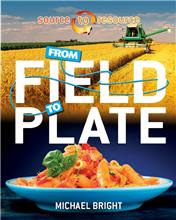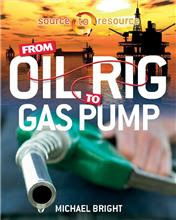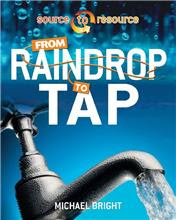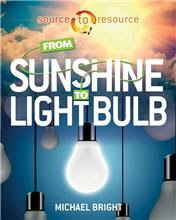| ________________
CM . . .
. Volume XXIII Number 35. . . May 19, 2017
excerpt:
Go broader and go deeper with the rich content of “Sources to Resources”. The four books, From Field to Plate, From Oil Rig to Gas Pump, From Raindrop to Tap, and From Sunshine to Light Bulb, go well beyond just outlining the procedures involved in turning a natural resource into products we use daily. By presenting different aspects of each topic, ethics, environmental and economic concerns, and social impacts are all examined. Colourful photos, illustrations and diagrams, combine with clear text arranged in eye-catching layouts to make the books in the “Source to Resource” series very reader-friendly. Examples from around the world ensure that the books have an international context. For example, From Sunshine to Lightbulb includes a reference to the longest undersea transmission line between Norway and Netherlands, the tallest transmission towers supporting cables between Damao Island and Liangmao Island in China, and the Solar Ark in Japan, among others. Text features include “Did you know?” fact boxes, informatively labelled diagrams, table of contents, glossary, index and a short list of additional resources. Each book also includes a labelled diagram showing the flow from original resource to final product at the very end of the book. This visual summary is an excellent recap of the topics. From Field to Plate looks at where our food comes from and what a year in the life of a farmer and a rancher look like. Pictures and text present the reality of intensive farming for pigs, hens, and fish. Much less stressful pictures and illustrations present information on organic farming. Transporting, preparing, preserving, and selling food complete the process of getting food on our plates. The final thought-provoking topic examines World Food, including information on saving seeds in special seed banks. From Oil Rig to Gas Pump outlines the process as oil is located, extracted, moved, and processed to be used now and in the near future. Both the hazards and the benefits of oil production are presented. Students will learn that so many products that they use every day are petroleum-based, things such as medicines, clothing, car tires, shoe soles, sugary treats, toothpaste, cosmetics, fertilizers, detergents, and packaging. The book ends with a short look at alternatives to oil. From Raindrop to Tap sets the context for an examination of water by looking at the blue planet, Earth. It looks at water sources, treatment, use, conservation, and finally ends with examples of the inequities of the availability of clean water around the world. The final paragraph in the book should provide an excellent opportunity for discussion.
From Sunshine to Lightbulb unfortunately begins with some misinformation. “Solar energy is light and heat from the Sun. It is a renewable energy source because the Sun will never run out.” If we agree that a billion years is close enough to “never”, then we can let that first statement stand. However, three pages later, the Sun’s life span is defined. “Today it is described as being middle-aged, so it is unlikely to change very much for another four billion years.” It is confusing and inaccurate to describe something that has a life span as never running out. But again on the last page of the book we are told, “Solar power is renewable and sustainable. It will not run out.” It is unsatisfactory to see an otherwise informative text opt for a convenient alternate fact. The other information in From Sunshine to Lightbulb is clear and comprehensive. Topics include how solar energy is collected and used for heat and light. The future use of solar energy for transportation by car, plane, boat, and train, is examined. As well, future solar collection could be in space. Overall, “Source to Resource” is an excellent series. Readers will find both benefits and challenges for each topic. The format and content are engaging and comprehensive without being overwhelming. Well done. Highly Recommended. Suzanne Pierson, a retired teacher-librarian, is currently instructing librarianship courses at Queen’s University in Kingston, ON.
To comment
on this title or this review, send mail to cm@umanitoba.ca.
Copyright © the Manitoba Library Association. Reproduction for personal
use is permitted only if this copyright notice is maintained. Any
other reproduction is prohibited without permission.
Next Review | Table of Contents For This Issue - May 19, 2017 |



